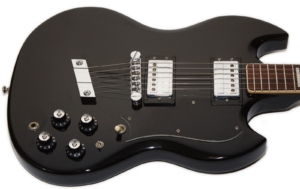
This black beauty is a Guild S100 Polara from 1994. It was owned by a member over on the LetsTalkGuild forum who was kind enough to let me borrow it for a quick (three month) write up and review after which I threw money at him until he let me buy it outright. While that may not be strictly true, what’s important is the fact that it’s now mine and you can’t have it. What’s the big deal about an S100 from 1994? You’re just going to have to read the review to find out.
Introduction
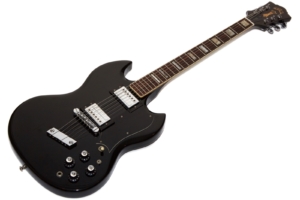
I was never a big fan of the S100 design but that 1997 S100 I Wrote up made me a believer. It’s a fabulous instrument and is one of the guitars that has stayed in my collection after I reviewed it because it was just so damn good.
This one is better.
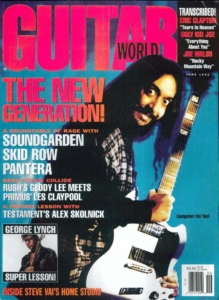
In 1984, the band Soundgarden was formed by Chris Cornell and Kim Thayil. Kim Thayil was a Guild fan since he bought his first Guild S100 in 1978 for the tidy sum of about $250 because he liked the way it played more than the other guitars he had used. Mr. Thayil is obviously a man of refined tastes.
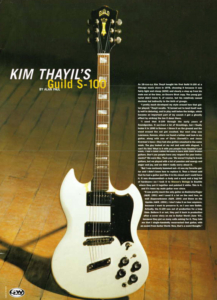
There’s a reason I’m spending so many words going on about the history of Soundgarden and Kim Thayil, and it’s not just because he’s an obvious fan of Guild guitars. Well, I mean, that’s a big part of it, but there’s more to the story in regards to the guitar I’m reviewing.
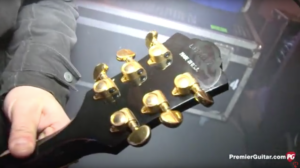
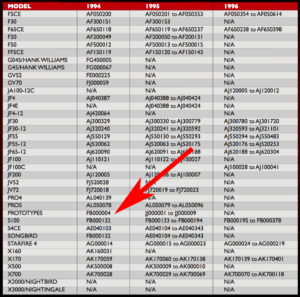
In the often incorrect Guild serial number charts, there is an entry in 1994 for Prototypes. The prototype serial numbers end at FB000004 in 1994 and change to JJ prefixes in 1995. The S100 serial numbers end at FB000132 for 1994 which makes me think that though this is not Kim Thayil’s stolen guitar (phew!), it is the first one off the assembly line that didn’t go to Kim. How cool is that?
I should temper my excitement because Hans Moust has told us in the Guild community that guitars were often made in batches and that the number may not necessarily indicate the order of manufacture, and that the serial number chart is often incorrect. Still, having having #5 when Kim Thayil has numbers 1-4? That’s cool no matter how you slice it, and that’s not even the whole story! This guitar has some cool features that make it even more special. I guess that means it’s time to talk about the guitar.
Finish
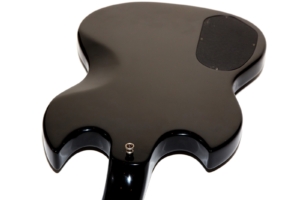
Usually seen in red, black, or white, the black finish on this guitar was so black and so perfectly reflective that I had to upgrade my photography layout because the mirror-like surface reflected everything in the room.
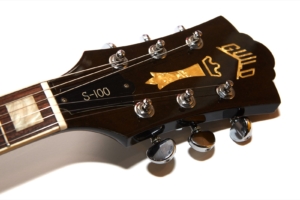
There is only one problem area on the entire guitar which looks like a tiny stress fracture in the finish by the nut. Having been shipped from the US to Japan and back again, and then back and forth within the US a couple of times, there’s no telling what kind of handing it received, though it’s safe and sound now.
Fretboard and Neck
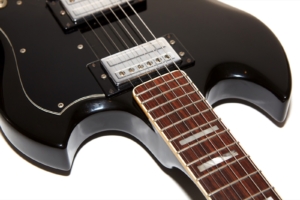
The neck on this guitar is halfway between 1 5/8″ and 1 11/16″ which makes it feel better than the ’70s S100s and almost as good as the ’97 I have. Since it’s halfway I think it would work for people who prefer either size.
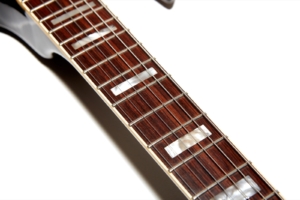
The frets are .08″ wide by .025″ high which makes them typically small Guild frets found on Guild electrics from the ’70s and ’80s. This is a reissue, after all, so they made it the way they always made them, at least for a while.
The fretboard radius is a fairly flat 12″ which I like a lot and just happens to coincide with what I think most Gibson Les Paul and SG guitars have.
As mentioned earlier the neck binding is quite yellowed but there are no splits which is a common malady that afflicts older Guilds.
The marker dots are very small and uneven with some of them partially hidden. That kind of surprises me given the attention to detail seen everywhere else on the guitar, but it’s a pretty common issue given the number of other Guild guitars I’ve seen from around this time that exhibit the same condition.
Build Quality
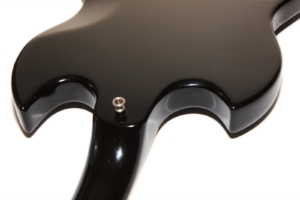
The guitar has a set-neck design and the neck joint is very stable. The guitar feels very solid in the hand and couple with the killer lacquer finish the guitar feels like a luxurious vintage instrument that, as of this writing, is 24 years old.
These are relatively simple guitars so there’s no body binding or purfling or any high-end features like those, though the neck is bound and looks great.
This guitar is pretty light weighing in at 7 lbs 12 oz (3.52 kilos) which part of what makes them so great to play for long periods. It’s also not too light which I feel would rob the guitar of some of it’s oomph, that being a wholly accurate scientific term used to describe mojo.
Pickups
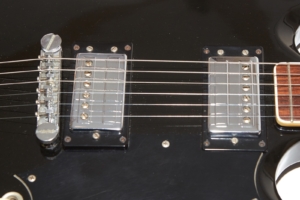
This guitar holds a unique place in history and I have a thing about altering vintage guitars, especially when they’re this minty fresh. I actually have a couple of pairs of these great 4-wire HB1s in my collection (see details about all HB1s here) but I can tell you that I paid some pretty pennies to get one of those pairs (in beautiful NOS gold), and they’re worth every one of the pretty pennies I paid.
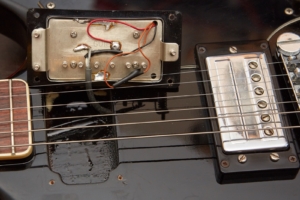
So yeah, this guitar is not only from the very first batches (if not the first) of the newly reissues S100, but it’s got über-rare versions of Guild HB1s which only came in the very first few reissued S100s. This is the third of three Guilds I own from 1994 with these rare HB1s and they’re all works of art, one of them being the stunning Guild X170 that I reviewed here.
Electronics
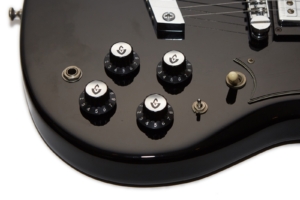
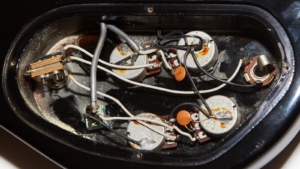
As is common on Guilds, the capacitors are nothing special and are just off-the-shelf ceramic discs labeled 203 which means they have a value of .02 μF.
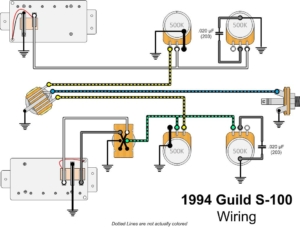
I’m not a middle-position lover because the guitars I used when younger were all coupled and I found the middle position to be mostly stupid as a result. With decoupled wiring the tonal options are far better to my ears.
Hardware
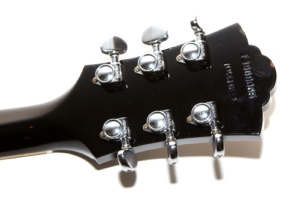
The switch tip surprised me because it’s not a Guild metal switch tip but rather white plastic. I find it hard to believe that this is original since I’ve never seen a Westerly Guild electric guitar with anything but a chromed switch tip and that’s usually a magnificent domed-top Guild tip to boot. I know the Newark Street S100s have plastic tips and I’ve seen some very old S100s with them, but I don’t know what was standard on those original models. Also comparing a Newark Street S100 to this guitar is just not going to happen. While the Newark Street models are nice and I compared one to my 1997 in this article, when it comes to this guitar, there is no comparison. This one absolutely crushes any solid-body electric guitar currently made by Guild (in early 2018).
The knobs are typical Guild G-shield knobs which are iconic for Guild electrics but sadly not the best knobs in the world. Still, I have paid big money to replace broken ones because they just look right to me after years of loving them.
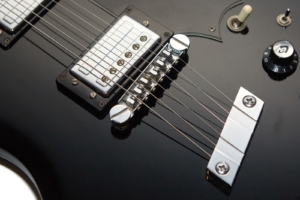
The bridge made by Mueller and is standard Guild fare for the 1970s models, though they did change slightly over the years. I point this out because this bridge didn’t last long on the reissued S100s. My 1997 has a more off-the-shelf bridge and though I haven’t done any critical research on the subject, I think they had moved away from the Mueller bridge perhaps as soon as the same year (1994), though they kept the increased distance from the bridge to the tailpiece. There was a period when this distance was shorter which can help to date these guitars from a distance or if you don’t have access to the serial number, but that’s outside the scope of this review.
Sound
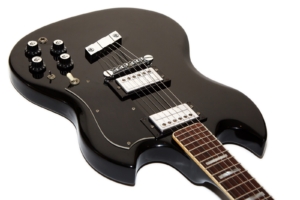
ODS Clean
7th Chords
Open Chords #1
Open Chords #2
JCM-800
A Barre Chords
More Barre Chords
D-Shape
Muse
Spoonman
For each recording (except the last two) I cycle through the neck pickup, both pickups (in phase then out of phase), and finally the bridge pickup. All knobs on the guitar are on 10 at all times.
This guitar sounds amazing, and it’s a kind of sound that you just can’t get from the later S100s with their Seymour Duncan SD1 pickups. Those pickups sound great, but they’re darker and a tad less articulate than the HB1s; they’re just missing the magic that makes HB1s great. It’s pretty common knowledge that vintage HB1s are some of my favorite pickups ever, but these 4-wire HB1s that I’ve only encountered in early 1994 Guilds are somehow even better. Maybe that’s my imagination, but regardless of my perception verses whatever reality may be, this guitar just sounds freaking amazing.
Playability
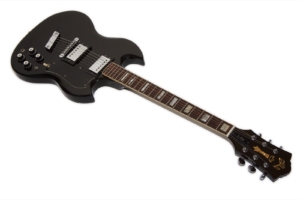
Let’s be honest here – this is a time-honoured design and one that works well. I can tell you, though, after owning an amazing Gibson SG with P90s (GOTW #37) that had a huge and heavy neck that this guitar balances much better than that SG ever did. It plays great while seated or standing and thanks to the thinner body style than, say, a Les Paul or Guild Bluesbird, it lays flat and can be more forgiving over long periods of play.
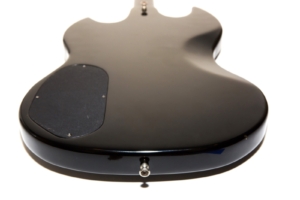
The strap pegs are directly in the centerline of the guitar which means it hangs very well on a strap. That peg in the middle of the neck tenon can be an issue if you ship the guitar and don’t pack it well but you’re more likely to have a headstock problem since the guitar should always be shipped in its case.
Conclusion
The Guild S100 is an amazingly popular guitar and for good reason. I’ve owned a few and though those were great guitars, none of them hold a candle to this one. This one is beyond amazing and the idea that it was made in the same batch (I assume) as the one that Kim Thayil still uses on stage is pretty cool.

Of all the different Guild S100 Polaras I’ve played over the years, this one is by far the best, and that’s saying something because I really like my ’97. This one’s got it all, though: better neck, absolutely killer pickups, the right bridge/tailpiece distance, and absolutely impeccable workmanship all around. It’s a keeper, and I feel honored to be its steward.
Finally, no, you can’t buy it from me. Unless you’re Kim Thayil, in which case let’s talk. Honestly, though, the answer will likely still be no – that’s how good this guitar is. Still, it could be fun to talk to Kim Thayil. Hey Kim – you know where to find me!
Donate: PayPal Crypto:
ETH: 0x0AC57f8e0A49dc06Ed4f7926d169342ec4FCd461
Doge: DFWpLqMr6QF67t4wRzvTtNd8UDwjGTQBGs


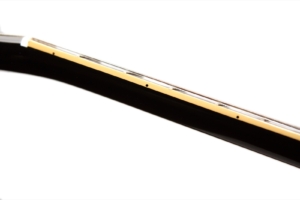

Mr Thayil doesn’t have #1-4. Don’t forget, I have #3 (and the epically cool #007). Much like you, I always fantasize that it may be one he played based on the rig rundown. 🙂
saw an s100 in a pawnshop last week. woke up one night this week and decided I had to have it. went back to the ps and it was still there. I believe in karma. I accumulate and play poorly. I enjoyed reading and learned much from your site.
Here’s one for you. I’m buying a natural 1994 S100 that was on display at the 1994 NAMM show, mint condition. Serial # is also…wait for it….. FB000002! I’ll send you pics when I get it in a week or 2.
Cool – can’t wait to see it!
Me either! I’m like a kid waiting for Santa Claus over this one. The seller was a big Guild collector who had an inside connection with the Westerly folks. He bought it at NAMM and it’s been in it’s case since 94′. I posted on a Facebook site that I desperately wanted one and he contacted me to say he would sell it as he has many other Guilds and is not an S100 fan. He has the Last two X2000’s and had the X3000 he sold to a friend.
Nice. I have an X2000, an X3000, and an X4000 all pending review.
Doesn’t Thayils S100 up there say LJ000002? Doesn’t look like FB
The one in the premier guitar video
My guess is LL00xxx as LL means Prototype in Guild SNs.
Thanks Gary, that was a fast reply! The #002 will be here Tuesday evening. I’ll get some better pics and pop the pickups to see whats there while I set it up.
I checked now. Mine is FB000313. What does it mean? 🙂
That it’s likely from 1996.